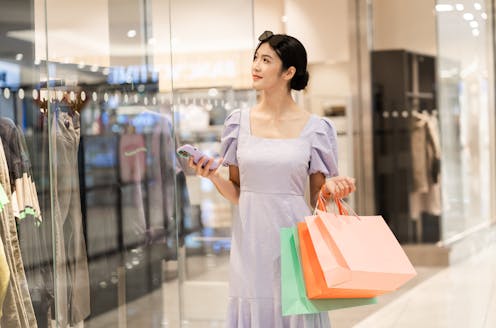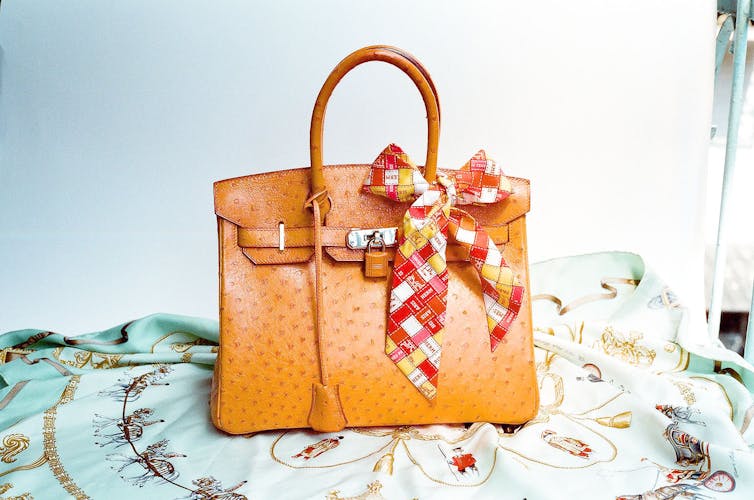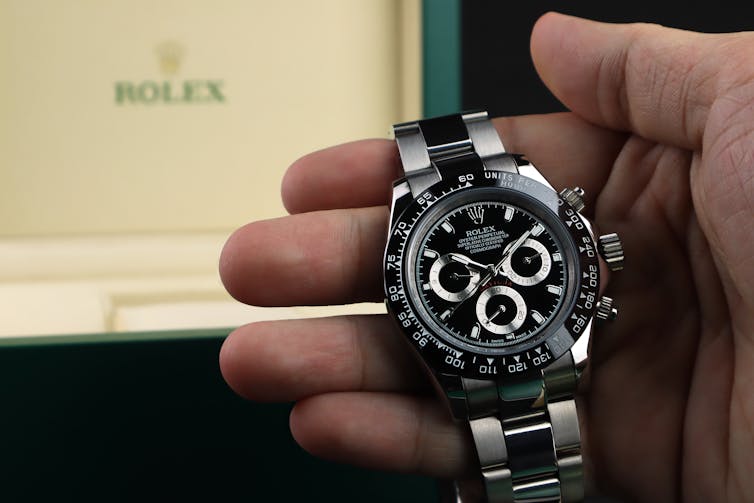
Whether it’s aspiring to the “quiet luxury” or “old money” looks taking over TikTok, or cringing at the “ludicrously capacious bag” scene in the last season of Succession, designer clothes and accessories have been a hot topic in 2023. But with continued sales growth in designer fashion, and concerns about shopping more sustainably, it’s worth considering investing your money in products that will last longer.
Sales in luxury fashion have increased significantly since the pandemic. Louis Vuitton, for example, has increased its sales from 2019. And British luxury brand, Burberry, reported sales growth to be 86% higher in the year following the pandemic (though there has been another dip in sales more recently).
The rise of athleisure in fashion and designer collaborations such as Manolo Blahnik for Birkenstock, Gucci x Adidas and Burberry x Supreme have made luxury more available. But prices are still high, so how can you know whether a purchase will stand the test of time and become an investment piece or a fashion flop? Here are four key factors to consider when making a designer purchase.

This article is part of Quarter Life, a series about issues affecting those of us in our twenties and thirties. From the challenges of beginning a career and taking care of our mental health, to the excitement of starting a family, adopting a pet or just making friends as an adult. The articles in this series explore the questions and bring answers as we navigate this turbulent period of life.
You may be interested in:
Four environmental red flags to watch out for when buying your new home
How to know if your employer is serious about helping you find purpose in your work
Why it’s so hard to be young in Britain right now
1. Resale value
An expensive purchase price may not guarantee that your product will hold its value. A key factor to consider is what the resale value of your purchase will be, as this will indicate the item’s investment potential.
A fashion investment piece tends to be a luxury product with a higher price ticket. Prices of luxury fashion have increased over the last decade. Chanel bags, for example, have almost doubled in price. Chanel’s iconic medium flap bag has increased from £7,550 in 2022 to £8,530 in 2023 and is considered to be one of the most covetable designs in the resale market.

Similarly, Hermès’ famous Birkin and Kelly bag designs, renowned for their quality, are undoubtedly investment pieces. Despite the high price ticket, Birkin bags are in demand. They are the most collectable and classic of designer bags, with an average retail price of USD$10,000 (£8,237), which can double in the resale market.
Luxury fashion resaler Vestiaire, along with online marketplaces like eBay, are useful sources for researching and calculating what the value of your purchase will be in the resale market. While designer bags can hold their value post-purchase, clothes can be less straightforward and will depend on the other following factors.
2. Quality and style
A 2023 report has stated that the overt use of logos in recent years, from brands such as Balenciaga and Louis Vuitton, has been replaced by an interest in quiet luxury.
Quiet luxury means more simplistic, classic and timeless styling. The focus on exquisite fabrics and design gives a sense of fashion that is not disposable and durable. A cashmere sweater from Lorna Piana may cost over £1,700 but its quality and classic styling will ensure it’s an investment piece that transcends fashion trend cycle.
Consideration of fabrics, styling and design aesthetic are all key in ensuring your fashion investment has longevity.
3. Brand authenticity
Heritage and authenticity can secure the value of fashion purchases. Brands that have a strong heritage – that have been around and respected for a long time – are better investment pieces, particularly in the categories of watches, jewellery and handbags. Rolex watches are renowned as investment pieces, with models that are most rare commanding the higher appreciation values.

In the realm of clothing, Burberry’s iconic trench coat – which has remained largely untouched in design terms for over 100 years – has been reported to be a good wardrobe investment by Vogue. The trench’s timeless design, alongside its long history, has secured its place as an investment product.
However, when it comes to making the purchase it is important to go with Burberry’s original design, rather than the fashion-led versions whose value may diminish as seasonal trends move on.
4. Product endorsement
Celebrity endorsement is a popular brand strategy for increasing the value of fashion products. While it may drive sales, it is important to consider what effect it will have on investment quality.
A recent example was when the British pop star Harry Styles wore the luxe Adidas x Gucci Gazelle trainers, during his 2023 tour, resulting in a reported 100% increase in sales of the trainer.
While sneakers have previously had a bouyant resale market, that is now declining, raising questions as to whether they will continue to be positive investment pieces. Celebrities may create hype – but their endorsement does not always ensure the longevity of a product’s value.
In 1999, Dior’s saddle bag was featured on US TV series Sex and the City, securing its place as an iconic designer bag. While this increased its value and desirability at the time, the bag eventually faded from view, until 2018, when Maria Grazia Chiuri, Dior’s current design director, relaunched it. This resulted in a frenzy of interest in the original Galliano designs.
Endorsement creates hype and desirability, but occasionally it can also create a classic too. But this takes time, and it’s best to consider other factors including brand authenticity, quality and style when planning an investment purchase.
Also, value does not always have to have a price attributed to it. In the world of designer fashion, it is important not to overlook the significance of the emotional durability of our purchases and how that can ensure an enduring value and longevity.

Looking for something good? Cut through the noise with a carefully curated selection of the latest releases, live events and exhibitions, straight to your inbox every fortnight, on Fridays. Sign up here.
Naomi Braithwaite does not work for, consult, own shares in or receive funding from any company or organization that would benefit from this article, and has disclosed no relevant affiliations beyond their academic appointment.
This article was originally published on The Conversation. Read the original article.







